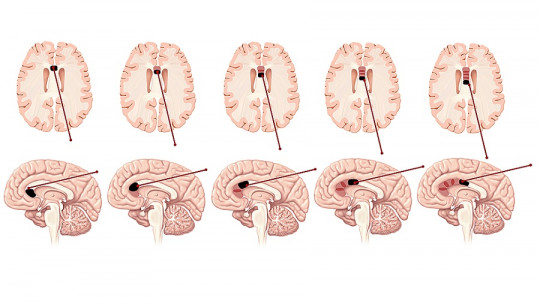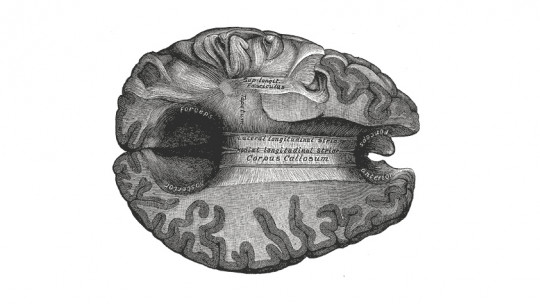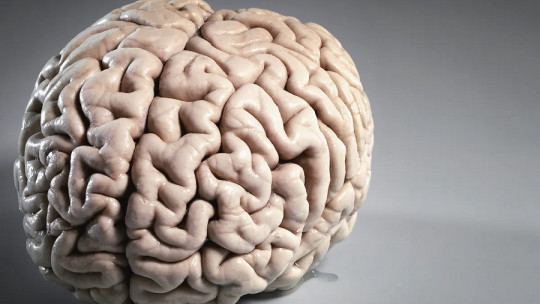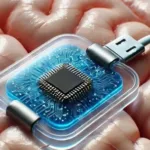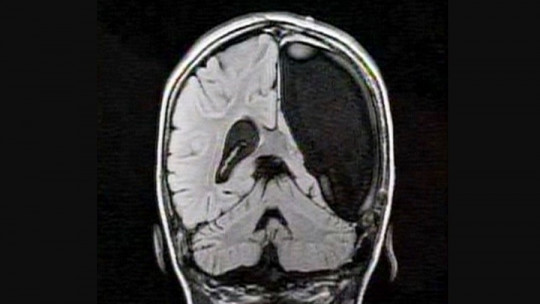
The field of neurology is extremely delicate, and each intervention must be done knowing that the consequences can be dramatic.
Probably one of the most extreme interventions that exist is that of hemispherectomy We will dedicate this article to talking about this type of operation to know what its most common effects are and in which cases it can be considered.
What is hemispherectomy?
Hemispherectomy is a surgical intervention consisting of the removal or disconnection of one of the two hemispheres of the brain Obviously, this is a highly invasive operation, which is only carried out in very particular situations, the incidence of which is really low in statistical terms.
In other words, hemispherectomy involves a last resort in the face of certain neurological pathologies which, given the failure of other less invasive methods, leave as the last option the aggressive intervention that involves removing a part or even half (a complete hemisphere) of the brain, with the consequences that this implies.
Hemispherectomy is primarily used to treat the most extreme cases of epilepsy, but we will delve deeper into this issue later. What must be clear is that, logically, a medical intervention as aggressive as this is not suitable for all types of patients. In that sense, certain requirements must be met. The first is not having achieved any type of improvement with the rest of the available treatments.
Besides, Age is key to deciding whether or not to carry out this operation And the younger the patient, the more likely they are to experience fewer sequelae. This is due to brain plasticity. Therefore, the best candidates to achieve a successful hemispherectomy are children.
Young children, having not yet completed many of the neural connections, start with a certain advantage, since the remaining hemisphere will be able to assume a large part of the tasks that, in the general population, would be distributed between both sides of the brain. Therefore, the general rule will be simple: the younger the patient, the more likely the hemispherectomy will be successful and the less serious the sequelae will be.
What is this medical technique for?
We anticipated that hemispherectomy is a neurological operation intended to improve the situation with very severe epilepsies, in which the origin is a brain dysfunction in a very specific region For example, the disease known as Rasmussen encephalitis would be one that would fit that profile.
As a general rule, two-thirds of patients who suffer from epilepsy experience improvement to a greater or lesser extent thanks to pharmacological treatments or other techniques or moderate surgical interventions. But the rest, unfortunately, do not achieve these positive effects.
Within this group of patients who do not improve, some suffer seizures and other symptoms, in a moderate way, so they can live with their disease, even suffering from the limitations that it generates. But there are other people whose epilepsy is so severe that their quality of life is absolutely impaired. Hemispherectomy would be a last resort designed for these specific people.
Despite the aggressiveness of this technique, the average success is very high It is estimated that almost 90% of people treated with this procedure stop suffering from seizures, which is logical, taking into account that the part of the brain that is causing them is removed.
Likewise, in patients so affected by the severity of epilepsy, it is observed that hemispherectomy also generates a significant improvement in their ability to carry out normal cognitive processes. We therefore observe that this is a risky technique, intended only for very serious cases, but which provides a high success rate.
Obviously, removing a part of the brain also has negative consequences, some of them severe.
How a hemispherectomy is done
Hemispherectomy was performed for the first time in 1928, although it had previously been performed on animals. Its first function was to eliminate brain tumors, such as glioblastoma multiforme, one of the most aggressive cancers. Even so, the aggressiveness of the technique meant that its use was very rare.
But in the 1980s, neurologists Carson and Freeman, members of the medical team at Johns Hopkins Hospital, recovered the use of this intervention, applying it especially to very young patients, since, as we mentioned previously, the brain plasticity of children resulted in a significantly greater improvement than that of adults.
Initially, the only way to perform a hemispherectomy was to directly remove the damaged hemisphere, thus removing, among other regions, the part of the brain that was causing the seizures. This method is known as anatomical hemispherectomy. But Later, another technique was developed, the so-called functional hemispherectomy
This new method, instead of removing the entire hemisphere, cuts the parts of the brain tissue where the origin of the epilepsy is located. Therefore, through this modality, the part of the brain associated with their disease is removed from the patient, trying to preserve other regions of that same hemisphere.
Logically, this option has some advantages, such as the non-elimination of brain structures that may be carrying out crucial tasks and that perhaps could not be assumed by the other hemisphere in the case of hemispherectomy. Likewise, this method reduces the risk of hydrocephalus, by accumulating a smaller amount of fluid in the place where that part of the brain tissue was previously located.
But those are not the only ways to carry out this intervention. In recent times, a methodology known as periinsular hemispherectomy has been perfected This technique involves the removal of a minimal part of the brain, where the focus of the seizures is located, and sometimes it is not even necessary to remove it as such, since the neurosurgeon tries to disconnect that area from the rest of the brain, sectioning it into different parts..
The most modern way to perform hemispherectomy is through surgical procedures with endoscopy and camera. In this way, the incision made is minimal, so the invasive level of the technique is drastically reduced, reducing the risks and also the possibility of infection. Likewise, the patient’s recovery is much faster, logically.
Real case of a person with a hemispherectomy
One of the most striking cases of success in a hemispherectomy that science has been able to observe in recent times is that of Nicolás, a patient born in 1989. As a baby, he began to show symptoms of severe epilepsy that caused hemiparesis, that is That is, the paralysis of half of the body (in this case, the left). The doctors recommended his parents to perform this intervention.
Nicolás’ right hemisphere of the brain was practically completely removed when he was just over three years old. We might think that such an aggressive operation would have scarred a person for life, but the truth is that this patient’s recovery was extraordinary. Being so young and having such an underdeveloped brain, neuronal plasticity facilitated the creation of networks in the remaining hemisphere
In this way, with only half of the organ, Nicolás managed to overcome one of the most complicated neurological operations that exist, and acquire a whole series of skills that until then had been impossible for him due to the severe epilepsy that he had suffered since birth..
To have perspective on the extent to which this patient’s life has been normal since then, we must know that he has even been able to develop hobbies as complex as the sport of fencing with remarkable skill (even achieving a bronze medal in a national championship). or the art of painting.
One of the consequences of his past illness and the hemispherectomy is a partial loss of mobility in his left hand Furthermore, since the same hemisphere is responsible for sending motor commands to both sides of the body, when performing tasks with the right hand, the left partially repeats some of those same movements.
In any case, these are relatively mild effects, taking into account the type of operation to which he was subjected. Even so, it is important to keep in mind that this patient’s case is exceptional, and it was thanks to the very favorable conditions and his young age that his recovery from the hemispherectomy and his evolution were so remarkably good.
But each case is particular, so some people will have a prognosis as good as this case, and others will suffer different consequences, depending on the particular conditions of each one.


